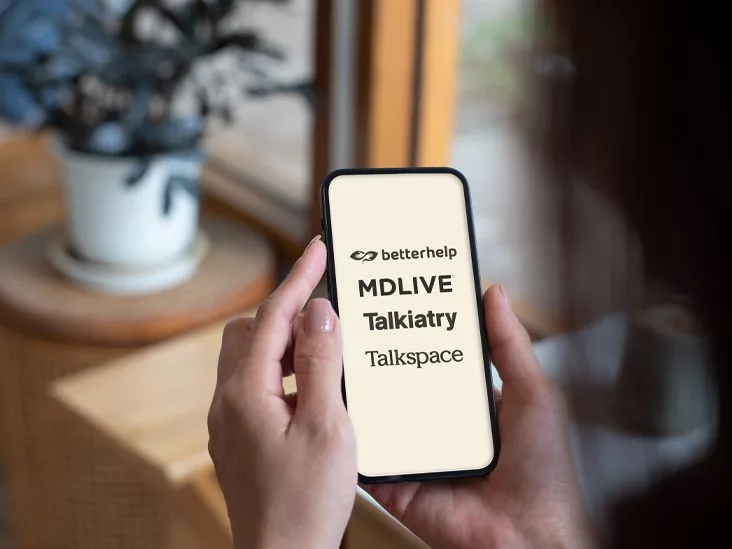Most people don’t realize that you can begin healing from trauma without ever leaving the comfort of your couch. If you’ve been scrolling for answers about online trauma therapy—whether it’s the “best trauma therapy” for PTSD, a quick “teletherapy for PTSD” option, or just a safe place for “virtual trauma counseling”—you’re in the right spot.
This article gives you a straight‑to‑the‑point rundown of the top tele‑therapy services, explains how effective virtual care really is, and walks you through the exact steps to start feeling better right now. Let’s dive in, shall we?
Understanding Online Therapy
What Counts as Online Trauma Therapy?
When we talk about online trauma therapy we’re referring to any evidence‑based treatment delivered over a secure video call, phone line, or even a specialized web platform. The most common modalities include:
- EMDR (Eye‑Movement Desensitization and Reprocessing) – a structured approach that uses bilateral stimulation to reprocess distressing memories.
- CBT (Cognitive‑Behavioral Therapy) – teaches you to identify and change unhelpful thoughts linked to trauma.
- Trauma‑Focused CBT – a blend of CBT techniques with a specific emphasis on trauma narratives.
- Integrated multimodal programs – combine video sessions, peer‑mentor support, and interactive exercises.
Some platforms (like remotEMDR) even sync bilateral stimulation in real time, so you get the same sensory input you would in an office setting.
How Effective Is It?
Research over the past decade shows that virtual delivery does not dilute the power of proven therapies. A 2022 study in Frontiers in Psychology compared remote EMDR with face‑to‑face EMDR and found no statistically significant difference in symptom reduction for PTSD patients. In other words, the “online” part isn’t a gimmick—it’s a fully validated way to heal.
Real‑world data echo the lab findings. Nema Health reports that 82 % of clients no longer meet diagnostic criteria for PTSD after completing its intensive online program, and 90 % notice measurable improvement within weeks. Those numbers sit comfortably alongside traditional in‑person outcomes.
Who Should Consider It?
Virtual trauma care is especially valuable for:
- People living in rural or underserved areas where qualified trauma specialists are scarce.
- Those with physical limitations, chronic illness, or caregiving responsibilities that make commuting difficult.
- Individuals who feel safer discussing painful experiences from a private, familiar space.
- Anyone seeking a quicker start—many platforms match you with a therapist in 24 hours or less.
That said, if you’re experiencing severe self‑harm thoughts, complex PTSD, or need intensive medical monitoring, in‑person care or a hybrid model may be safer. Always err on the side of caution and ask the provider about emergency protocols before you begin.
Quick‑Look Comparison Table
| # | Platform | Core Modality | Key Features | Insurance? | Clinician Credentials |
|---|---|---|---|---|---|
| 1 | Nema Health | Intensive CBT/EMDR | 3‑5 × weekly video, peer mentor, on‑demand scheduling | Major U.S. insurers | Licensed PTSD specialists |
| 2 | remotEMDR | Online EMDR | Synchronized bilateral stimulation, built‑in video chat, HIPAA‑compliant | Self‑pay (some employer plans) | EMDR‑IA certified therapists |
| 3 | Makin Wellness | EMDR & CBT | Personalized therapist match in 24 h, insurance accepted, fee‑free therapist swaps | Broad insurance network | Board‑certified psychologists |
| 4 | BetterHelp | General counseling (trauma‑informed) | Huge therapist pool, flexible pricing, unlimited messaging | Limited (mostly private pay) | Licensed LCSWs, LPCs, PsyDs |
| 5 | MindBeacon | Guided CBT | Self‑paced modules, video/phone sessions, 88 % satisfaction | Canadian provincial plans | Registered psychologists & social workers |
| 6 | MyndHeal | Web‑based counseling | Secure messaging, integrated exercises, broad issue coverage | Private pay, some insurance | Licensed mental‑health clinicians |
| 7 | This Way Up | Self‑guided PTSD program | 8‑lesson structured course, therapist assist option (Australia) | Government‑funded & private | Clinical psychologists |
Best Teletherapy Options
1️⃣ Nema Health – Intensive Online Trauma Program
If you want a fast‑track, results‑focused experience, Nema Health is a standout. After a brief intake, you’re paired with a licensed PTSD therapist who schedules 3‑5 sessions per week. The program blends CBT techniques with EMDR‑style exercises, and you also get a peer mentor who’s walked the same path. Clients rave about feeling “lasting peace” within a month, and the company is in‑network with most major U.S. insurers.
2️⃣ remotEMDR – The Dedicated EMDR Platform
For those who swear by EMDR, remotEMDR offers a sleek, all‑in‑one environment. The synchronized bilateral stimulation (visual, auditory, or tactile) is controlled by the therapist in real time, creating a seamless session that feels just like you’re in a shared room. The platform is fully HIPAA‑compliant and is trusted by over 30,000 therapists worldwide.
3️⃣ Makin Wellness – Personalized Match & Insurance Friendly
Makin Wellness takes the guesswork out of finding the right therapist. After answering a short questionnaire, you’re matched within 24 hours to a trauma‑specialist. Their “no‑fee swap” policy means you can change therapists if the fit isn’t perfect—something that feels oddly reassuring when you’re sharing your most vulnerable moments.
4️⃣ BetterHelp – Broad‑Scope Counseling (Trauma‑Informed)
BetterHelp isn’t a trauma‑specific platform, but its massive network of licensed counselors includes many who specialize in PTSD and trauma‑informed care. The flexibility (text, audio, video) and tiered pricing make it an accessible bridge for people who are just dipping their toes into therapy.
5️⃣ MindBeacon – Canadian Virtual Clinic
MindBeacon’s strength lies in its guided CBT modules. You get a secure video or phone session with a therapist who walks you through evidence‑based exercises, plus a library of coping tools you can revisit any time. Their client satisfaction rating sits at 88 %, and the service is covered by most provincial health plans.
6️⃣ MyndHeal – Web‑Based Counseling for Multiple Issues
MyndHeal’s platform bundles trauma counseling with resources for anxiety, depression, grief, and more. The secure messaging feature lets you check in between sessions—a small but powerful way to stay connected when the night feels longest.
7️⃣ This Way Up – Structured Self‑Guided PTSD Program
For people who prefer a self‑paced learning environment, This Way Up offers an eight‑lesson, clinically‑proven online program. You can add therapist assistance if you live in Australia, but the core curriculum alone teaches practical strategies for flashbacks, nightmares, and anxiety.
How to Compare Them (Quick Checklist)
- Accreditation: HIPAA, GDPR, provincial licensing.
- Therapist expertise: Look for EMDRIA‑certified or trauma‑focused CBT credentials.
- Session frequency & length: Intensive vs. weekly.
- Cost & insurance: Verify coverage before you sign up.
- Tech requirements: App only, browser‑based, or both.
Balancing Benefits Risks
Major Benefits
Online trauma therapy tears down the walls that traditional care can unintentionally build. You save commute time, avoid the anxiety of waiting rooms, and can schedule sessions around work or childcare. Many people report feeling safer opening up from a space they control—whether that’s a quiet corner of the bedroom or a cozy coffee shop (with headphones, of course).
Potential Drawbacks & Mitigation
Virtual sessions can mask subtle body language, which sometimes helps a therapist gauge safety. To offset this, choose platforms with high‑definition video and ask your therapist to check in frequently about how you’re feeling in the moment.
Data privacy is another legitimate concern. Stick with services that are HIPAA‑ or GDPR‑compliant, display a clear Business Associate Agreement, and use encrypted connections. If you ever feel an emergency brewing, make sure the provider offers a 24/7 crisis line or a clear escalation protocol.
Real‑World Example
Emma (pseudonym) lived in a remote town in Montana, far from any trauma‑specialized clinic. She signed up for Nema Health’s intensive program after a car accident triggered flashbacks. Within four weeks of three weekly video sessions, her PTSD checklist score dropped from severe to moderate, and she reported sleeping through the night for the first time in months. Her therapist credited the combination of regular video contact and the peer‑mentor’s “real‑time check‑ins” for keeping her grounded between appointments.
Getting Started Guide
Assess Your Needs
Before you pick a platform, run a quick self‑screen. Many sites—including This Way Up—offer free PTSD quizzes that give you an initial severity rating. Jot down the symptoms that bother you most (nightmares, hyper‑vigilance, intrusive thoughts) and note any co‑occurring issues like anxiety or depression.
Choose a Platform That Fits
Grab the comparison checklist above and narrow it down to two or three contenders. Ask yourself:
- Do I need insurance coverage?
- Do I prefer an intensive schedule or a gentle weekly pace?
- Am I comfortable with a purely video‑based model, or do I want messaging support too?
Set Up Your Space
Find a quiet corner where you won’t be interrupted. Good lighting (natural light works wonders) helps the therapist read facial cues. Test your internet speed—most platforms recommend at least 3 Mbps upload and download. Have a notebook or a digital note app ready for “homework” exercises.
Prepare for Your First Session
Bring a short list of goals: “I want to reduce flashbacks,” “I need tools for nighttime anxiety,” or “I’d like to understand my triggers.” Also, think about any questions you have about the therapist’s approach, the program’s length, or how emergencies are handled.
Sample Intake Worksheet (downloadable PDF)
If you like having things laid out, consider creating a one‑page worksheet with sections for:
- Current symptoms (rating 0‑10).
- Past trauma history (brief, as you’re comfortable).
- Therapy goals.
- Preferred contact method (video, phone, chat).
Having this ready can turn a vague conversation into a focused, productive start.
Expert Insights & Resources
Psychiatrist Commentary
Dr. Lena Ortiz, board‑certified psychiatrist who consults for several tele‑health platforms, notes: “Virtual EMEMDR and CBT have reached a maturity level where outcomes match in‑person care for the majority of PTSD cases. The key is therapist competence and a robust safety plan.” She adds that patients often feel “more in control” when they can pause the session, take a breath, and resume at their own pace.
Peer‑Reviewed Studies
Besides the Frontiers in Psychology paper mentioned earlier, a 2023 meta‑analysis in JAMA Psychiatry examined 27 randomized trials of tele‑therapy for PTSD and found an average effect size of 0.78—comparable to traditional face‑to‑face therapy. The authors concluded that remote delivery “expands access without compromising efficacy.”
Professional Bodies
When you’re vetting a service, look for endorsements from organizations such as:
- EMDR International Association (EMDRIA)
- American Psychological Association (APA)
- National eTherapy Centre (Australia)
- Canadian Psychological Association (CPA)
These bodies set practice standards, require continuing education, and often publish therapist directories you can cross‑reference.
Conclusion
Online trauma therapy isn’t a gimmick; it’s a lifeline that blends rigorous science with the convenience of modern technology. Whether you choose an intensive, insurance‑covered program like Nema Health, a specialized EMDR platform such as remotEMDR, or a flexible counseling hub like BetterHelp, the most important step is simply to begin. You deserve relief, you deserve hope, and you deserve a therapist who meets you where you are—digitally or otherwise.
Ready to take the first step? Pick a platform from the table above, schedule that brief intake, and give yourself permission to start the healing journey today. If you have questions, feel free to drop a comment or reach out—let’s walk this path together.


















Leave a Reply
You must be logged in to post a comment.